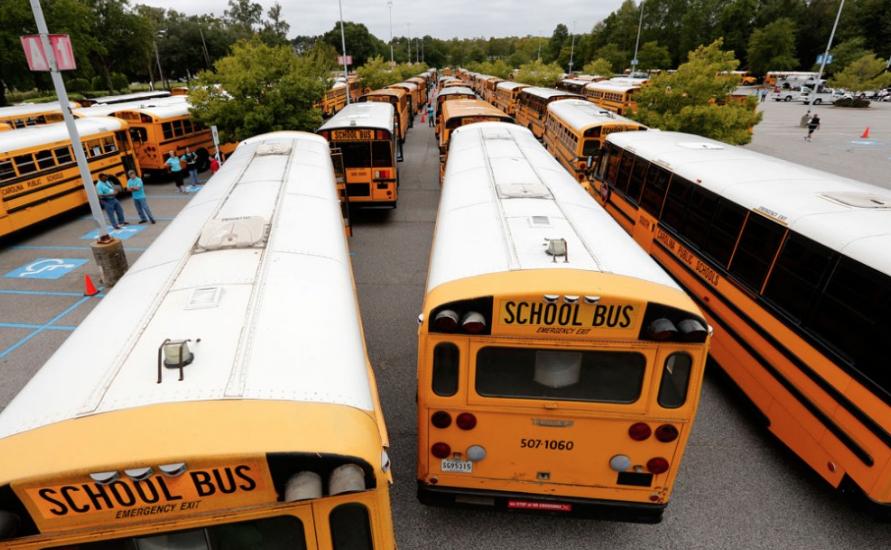A significant spike in juvenile crime from 3 p.m. to 7 p.m. on school days has led to a push by the state’s juvenile justice agency to shift school start and finish times.
The department is advocating for a later opening and release to limit the amount of time kids spend unsupervised in the evening. The thinking goes, the more time teenagers are congregated in one spot, the greater chance of delinquency.
“If you think about it, especially in environments that are urban, you usually have a large number of teenagers getting released from school at the same time,” said Jay Cleary, chief of staff to Sam Abed, the secretary of the Maryland Department of Juvenile Services. “Everybody is in one place, at one time. It just tends to be sort of a natural result.”
The proposal got some positive responses among members of a House committee last month.
Delegate Curt Anderson, D-Baltimore, told the University of Maryland’s Capital News Service that he is enthusiastic about the start-time idea. He said he had previously supported longer days on an academic basis, though the department’s proposal is to simply shift hours, ideally 9 a.m. to 4 p.m., not to extend the day.
“If (later or longer hours is) also talked about in relationship to public safety, I think that gives it another push,” Anderson said. “Mr. Abed talking about it in terms of the juvenile system, I think, was very timely.” Abed presented his findings to the House Judiciary Committee on Jan 17.
According to 2014 data from the U.S. Justice Department, roughly 19 percent of juvenile violent crime – which includes murder, sexual assault, simple assault, robbery and aggravated assault – happens during the hours of 3 p.m. to 7 p.m.
Fifteen percent occurs during the standard juvenile curfew hours of 10 p.m. to 6 a.m. But because “curfew” times are 8 hours long, every day of the year, the rate of crime during the four after-school hours is much higher, the report found.
And even though the number of school days and non-school days in a year are essentially the same, 63 percent of violent crimes committed by juveniles occur on school days, the Justice Department reported.
In Baltimore City, the vast majority of middle and high schools release at 3:30 p.m. or later. City Neighbors High lets out the latest, at 4 p.m. and starts at 9 a.m.
Amy Krulak, a special educator at City Neighbors High School, said the later hours have benefited students from an academic standpoint – they are more alert at 9 a.m. – but isn’t convinced that a later release would affect public safety.
It’s a nice idea, she said, but students would still, at some point, be together at a bus stop.
“If they’re getting out (together) at the same time, just later, I don’t know if that solves anything,” Krulak said.
Krulak also said it wouldn’t be ideal for students to walk home in the dark. The key to improving conduct in her view is for the school to “create a healthy environment” during regular hours.
The department of Juvenile Justice Services doesn’t see a downside.
“There’s nothing that’s going to completely eliminate young people getting into trouble at those times,” Cleary said. “But the spike is fairly large as it is right now (at the) 3 or 4 o’clock timeframe. If you’re able to push that out a little further, it can only help.”
The Baltimore City School Board said in an email to Capital News Service in January that it doesn’t have any thoughts or ideas regarding the secretary’s recommendation.
The bulk of Abed’s presentation was aimed to show the department’s progress in providing services and refining its methods, from addressing racial inequity to connecting released youth to community service.
Delegate David Moon, D-Montgomery, said he came away from the briefing particularly interested in the school-start time idea.
“That’s a new concept, but it’s fascinating,” Moon said. “If you believe the data (from Secretary Abed’s presentation), basically this is an issue about after-school supervision, to the extent that kids are getting out at 3 o’clock and then committing violent crimes until dinner time.”
Moon noted, however, that it’s precisely these types of specifics that show that more information is necessary in all facets of juvenile services to form legislation and pass effective solutions.
“The more data you have – and you can tease out little items like that – it might give you pause, to say ‘Okay, maybe the solution isn’t so simple as let’s add 10 years to someone’s jail sentence,’” Moon said. “If there are other factors in play, I’d like to see us take a more evidence-based approach.”
By Zach Shapiro



Write a Letter to the Editor on this Article
We encourage readers to offer their point of view on this article by submitting the following form. Editing is sometimes necessary and is done at the discretion of the editorial staff.